Verbascums (mullein) provide vertical flower spikes in a border, contrasting with the mounds and curves created by most perennial plants. They have a handsome rosette of foliage that endures throughout the winter too. The five-petalled flowers, which come in subtle and unusual shades such as sorbet white, zingy citrus-lemon, toffee-caramel, strawberry-pink or violet-purple are bee and hoverfly friendly. Often their welcoming saucers are loosely blotched and lashed at the centre with berry shades or raspberry or blackberry. This dark middle flatters the purples, blues and pinks of other summer plants. When winter arrives, some verbascums die well too, their seedheads and stems blackening to create a strong silhouette.
The most appealing verbascums tend to be named hybrids involving the violet-flowered Verbascum phoeniceum. The first to grab the public's attention was Verbascum 'Helen Johnson', a seedling that occurred at Kew in 1990. This strawberry pink, with brown overtones, became a vogue plant for garden designers.
Verbascum hybrids tend to be sterile which means that they never set seed, despite attracting the attention of pollinators. They have to be raised either by root cuttings from dormant plants or through costly micropropagation. Although this is a chore for nurseries, being sterile is a bonus for the gardener because sterile plants flower on and on in hope of pollination, giving months of colour rather than a short flush.
The downside is that many verbascums tend to be shortlived plants. Cutting flowering spikes to the ground in August can promote a fuller rosette, increasing their chances of survival from year to year.
IN BRIEF
What A varied group of biennials, long-lived perennials and short-lived perennials producing insect-friendly spikes of flowers.
Origins 250 species, mostly native to Europe and Turkey, all found on poorer, disturbed soil. They are members of the Scrophulariaceae family.
Season Flowering between May and September.
Size Heights ranging from 30cm to 2m or more. An upright habit, alhtough some rosettes can be up to 90cm wide.
Conditions All enjoy a sunny, open site with good drainage – excellent for drier gardens. Many have deep tap roots, allowing them to suck up water in drought conditions.
How to grow Verbascum
Where to plant verbascum
Plant verbascum in a sunny spot in well drained soil. Verbascums are great for drier areas as they have a long tap root that can search for water. Grow verbascum in a border, cottage garden or gravel garden.
How to plant verbascum
If the strong tap root on a verbascum gets disturbed it fails, so pot-grown plants from a garden centre should be as young as possible. If you do succumb and buy one in full flower, plant it extremely carefully and nurture it well through its first growing season, particularly if it’s been grown in peaty compost.
Caring for verbascum
Deadhead by cutting down the spent stem after flowering.
Verbascum pests
The caterpillars of the mullein moth can eat verbascum foliage in summer and they pupate close to the rosette in winter. Pick them off at the first sign of infestation and you should be able to keep them under control.
Growing verbascums from seed
Verbascum strains and species often set copious amounts of seeds so you may want to remove the seedheads to prevent unwanted seedlings. If you do remove the flowering spikes your plants often live longer. However the winter silhouettes of taller verbascums can be spectacular in the right setting. Commercially available packets of verbascum are easy to find. If saving seeds from the garden, harvest on warm days at midday and cut the seedhead into manageable lengths. Store the seeds somewhere cool and dry.
When to sow Verbascum seeds
Sow in April to May in warm conditions (roughly 15º-18ºC) in trays of seed compost. Germination takes between 14 and 30 days.
- Press the seeds into the damp compost.
- Move into shade as hot conditions and high temperatures stop germination and halt growth.
- Once the seedlings are large enough to prick out (with two proper leaves), transplant them into 7.5cm pots of John Innes No 1 compost.
- Grow on in cool conditions (around 15ºC) until the roots reach the bottom of the pot – if in doubt, upend carefully and look at the root ball.
Plant them young before the tap root develops. Either plant out into final positions once large enough, watering regularly until the autumn rains come, or plant at the beginning of September.
How to take Verbascum cuttings
All verbascums can be propagated from root cuttings taken from dormant plants between late autumn and March.
- Lift your plant and snip away two or three sections of root close to the crown. Remove only one-third of the root system or less and replant the original straight away.
- Wash the roots and remove any fibrous lateral growth.
- Cut each into 5-10cm lengths making a horizontal cut at the upper end and an angled cut at the lower. The larger surface area of the angled cut helps the plant develop roots and tells you which end is which.
- Fill pots with equal parts seed compost and gritty sand or perlite. Insert each cutting so that the horizontal cut surface is just below the surface, about 6cm apart.
- Top dress with 1cm of grit. Water lightly and place in a cold frame. Pot up once true leaves develop: this can take three months or more. Grow on and plant out once large enough.
Verbascums for your garden
Verbascum phoeniceum ‘Rosetta’
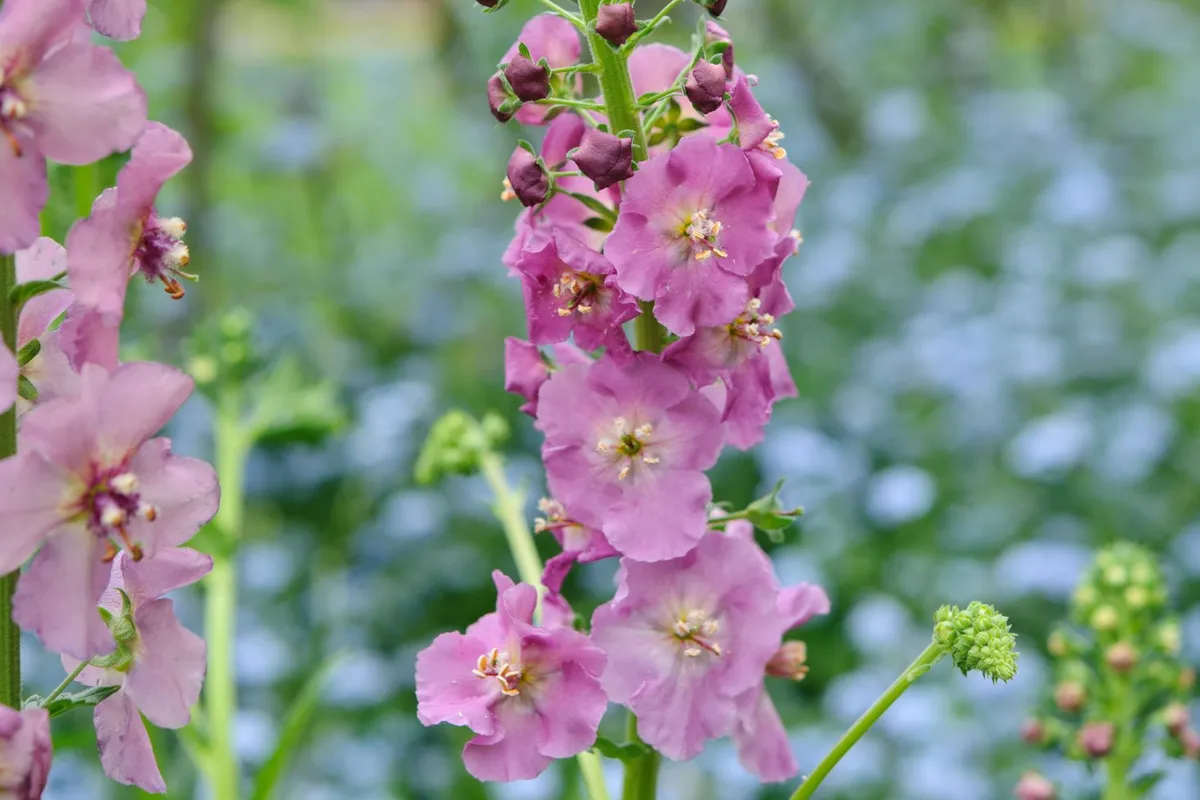
Long wands of flowers above a rosette of leaves. Seeds freely. May flowering – if deadheaded may re-bloom in autumn. Easy to grow from seed. H 40cm-60cm.
Verbascum 'Raspberry Ripple'
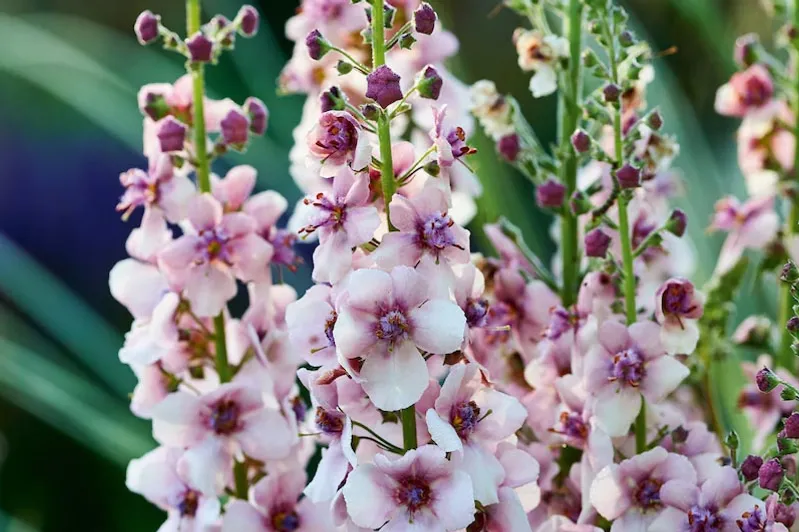
Perennial and compact with spikes of white flowers flushed with raspberry pink, with a dark pink centre. Dark pink buds. Height 50cm.
Verbascum 'Helen Johnson'
A seedling that occurred at Kew in 1990, this strawberry pink and brown verbascum became a favourite of garden designers. Height 90cm.
Verbascum blattaria f. albiflorum
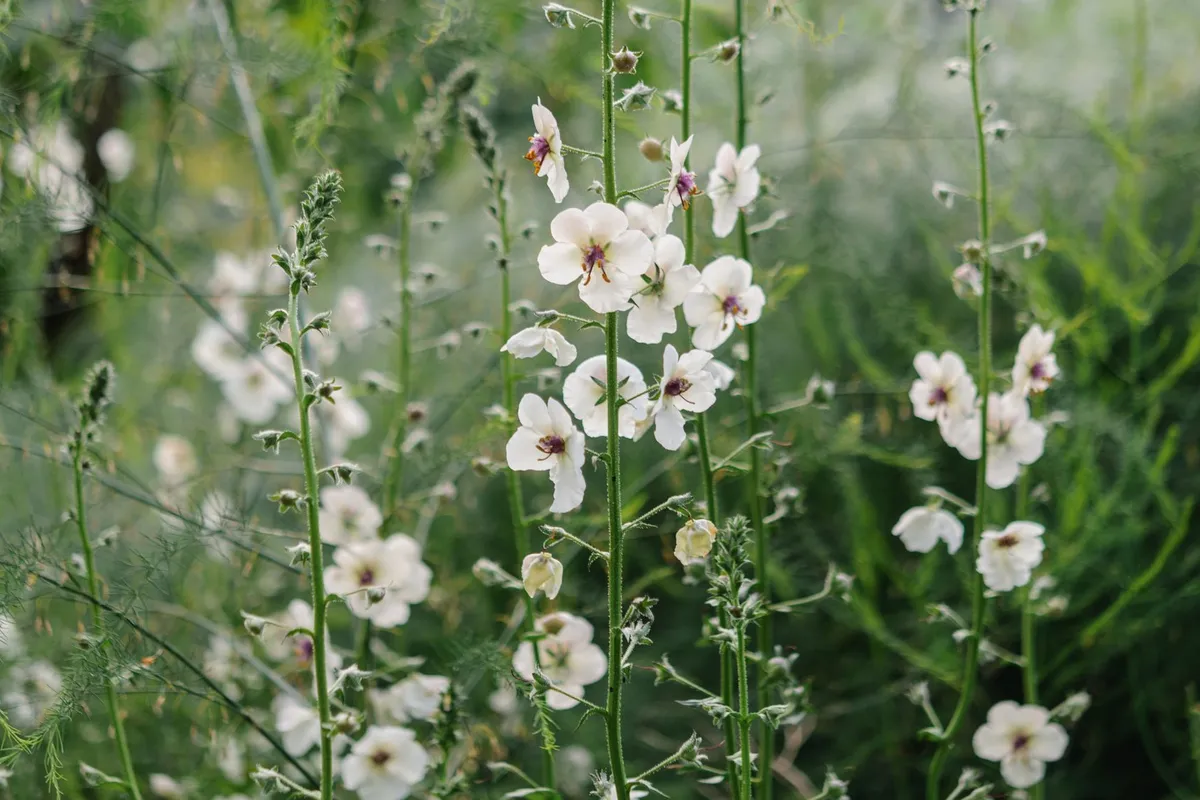
Several stems of white flowers smudged in smoky damson-plum, studded with golden stamens. Light, airy and largely biennial. Best in dry gardens or it can flop. H 120cm.
Verbascum nigrum

Some verbascum, such as Verbascum olympicum, have a reputation for being tough but not hard to grow. They do, however, need space and their candelabra profile makes them a great border plant. It’s a perennial, but one that you can treat as an annual. 2m.
Verbascum ‘Merlin’
A rose-madder verbascum with pink to lavender flowers, finely edged in brown. Bred by Vic Johnstone and Claire Wilson, it did well in 2007-2008 RHS trials. H 90cm.
Verbascum ‘June Johnson’
Copper-orange flowers and grey-green foliage make this 1990s verbascum a subtle addition to the garden (although this one can be hard to find). H 90cm.
Verbascum (COTSWOLD GROUP) ‘Royal Highland’
First shown at The Royal Highland Show and similar in colouring to Verbascum ‘Helen Johnson’, although a touch more apricot-pink. H 90cm.
Verbascum ‘Clementine’
A glowing, warm-toned verbascum that epitomises summer with purple-eyed warm orange-brown flowers. Reputedly longer lived than many. H 60cm.
Verbascum (COTSWOLD GROUP) ‘Pink Domino’
An AGM (Award of Garden Merit) verbascum with tall spikes, easy to place in a sorbet of roses or silvers. Short-lived perennial. There is also a ‘White Domino’. H 100cm.
Verbascum 'Spica'
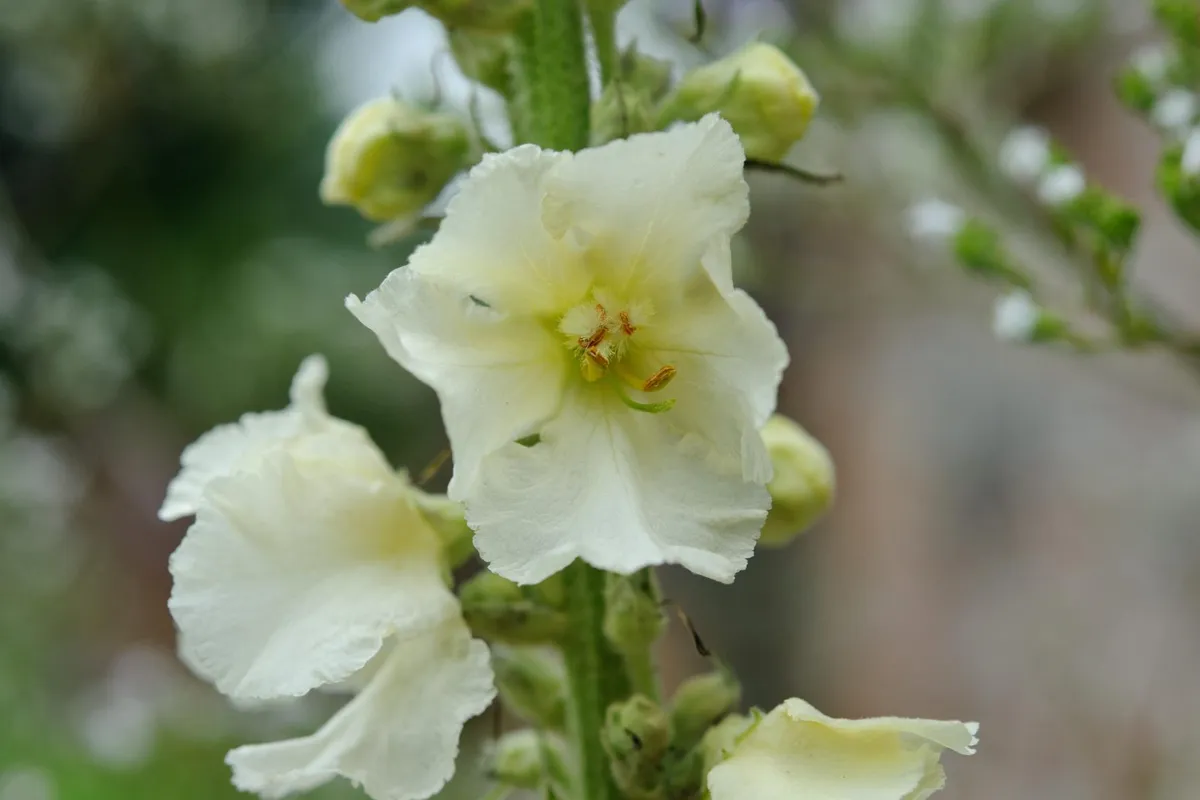
A tall biennial with a large evergreen, grey-green rosette. Cream flowers 4cm across on branched spires. Height 1.5-2m.
Verbascum chaixii ‘Album’
The longest lived verbascum of all. It has a rosette of grey-green crinkled foliage and several slender spikes of small white flowers, liberally blotched in damson purple. These marry well with dark roses but in dry summers they may flower later. AGM. H 120cm.
Verbascum ‘Cherry Helen’
This is a sport from 'Helen Johnson' that produced cherry-pink flowers gently washed in warm brown. H 90cm.
Verbascum ‘Valerie Grace’
A pretty verbascum with pink flowers and a darker plum-centre, just showing a touch of orange. Difficult to acquire. H 90cm.
Verbascum ‘Petra’
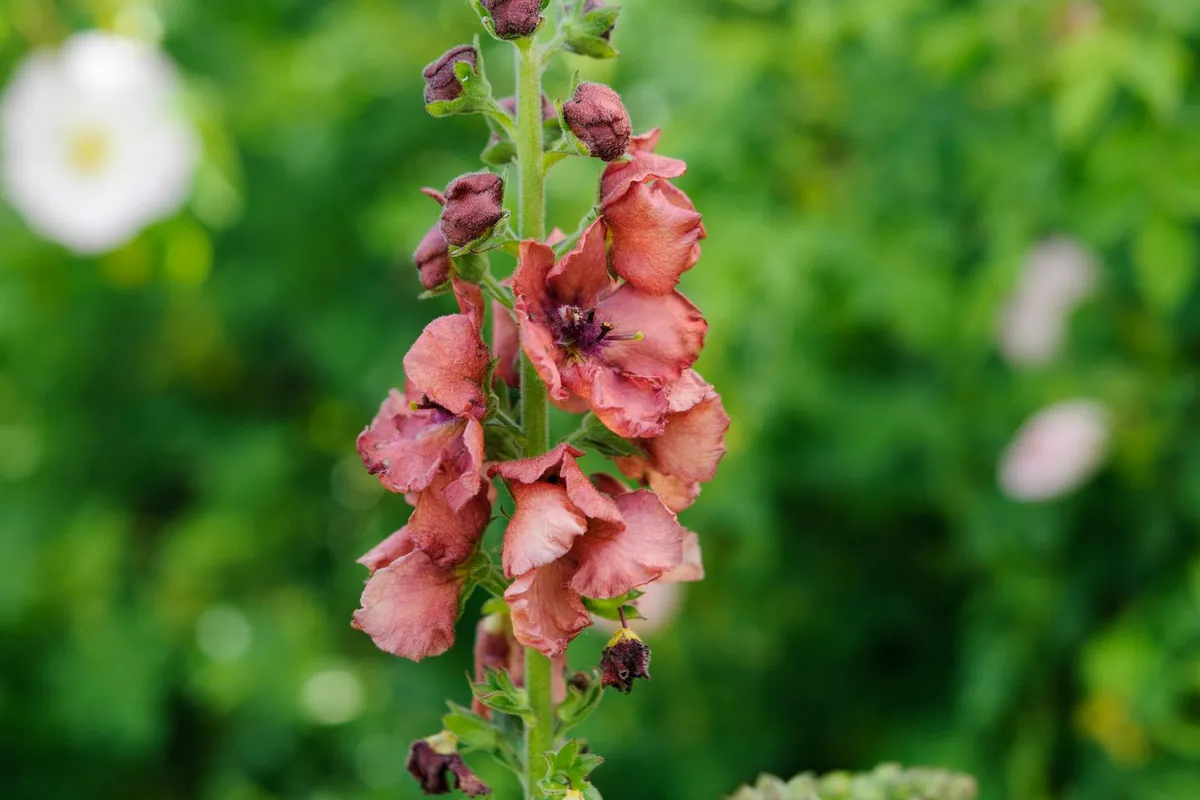
Verbascum ‘Petra’ has unusual reddish-brown flowers and is one of several cultivars bred by Vic Johnstone and Claire Wilson who formerly held the National Collection of Verbascum. Height 1.2m.
Where to buy verbascum
Sands Lane, Badsey, Evesham, Worcestershire WR11 7EZ.
Tel 01386 422829 cotswoldgardenflowers.co.uk
Priory Lane Nursery, Freefolk Priors, Whitchurch, Hampshire RG28 7FA
Tel 01256 896533 hardysplants.co.uk
